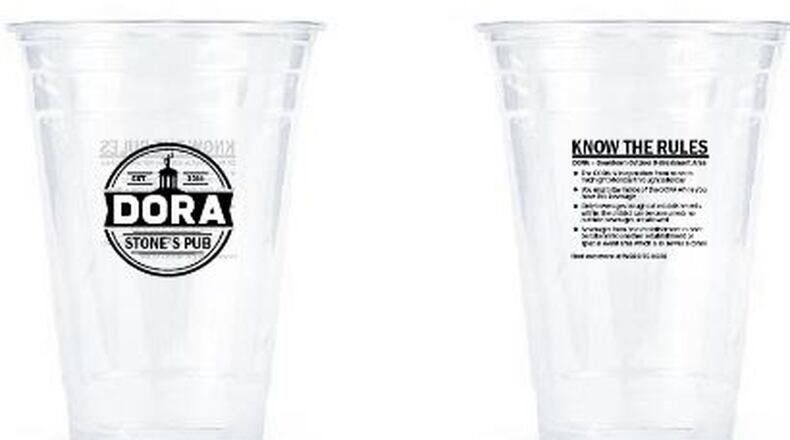Many aspects of the legislation could change, including proposed boundaries and times the DORA would be active. The legislation can change because officials still are seeking public comments on the proposed program.
Under such a program, the open-container laws are a bit relaxed. People can buy adult beverages in special plastic cups from downtown businesses and walk around the downtown area’s designated boundaries, said Jacob Stone, with Hamilton’s Department of Resident Services. They cannot enter other bars or restaurants with the cups, but will be able to browse through stores that allow the beverages. The new Marcum Park is within the proposed area.
The current proposal would allow the outdoor drinking from noon to midnight, seven days a week. It’s important to make the times predictable and consistent, so it’s less likely that people will show up downtown and be disappointed they are there at the wrong time to take advantage of the program, officials said.
People will not be allowed to bring their own drinks to the area. As currently proposed, the area will take in downtown between the Great Miami River and Martin Luther King Boulevard; along North B Street between Main Street and the proposed Spooky Nook Sports at Champion Mill (the former Champion Paper Mill) and along Main Street from the river to the Millville/Eaton intersection.
Officials plan to accept public input on Jan. 25, from 6-7:30 p.m. at the city building, 345 High St. The city has invited comments from business owners within the district at other times.
Under the program, businesses must use official DORA cups, which the city will purchase and sell to them for $1 apiece to cover its costs of running the program. DORA rules will be printed on each cup, which will have the name of the business that sold the cup of alcohol. Signs will tell people where the district ends.
In creating the DORA, the city also will have to create exceptions for the program to the city’s open-container laws, the city’s law director, Heather Lewis, said.
“People want more nightlife, that sort of thing,” Stone said. “We feel that we’ve hit a critical mass of new businesses coming in, especially restaurants.”
“This can be part of what we call our toolbox of incentives for people,” he added. “Some restaurants that have looked at Hamilton have asked, ‘Do you have one of these districts? And if so, where is it?’”
City officials have contacted Middletown, Lorain, Toledo and Lancaster to find out their experiences with such areas.
“The one thing that we hear over and over again is that the biggest take-home is make it as understandable as possible, and in many ways as possible keep it simple,” Stone said. “What we’ve heard from these communities is, ‘The only times we’ve had issues are when people genuinely don’t understand when you can and cannot be in the DORA, and what the boundaries of the DORA are.”
About the Author
